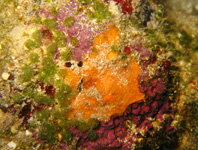Abstract
The Caribbean barrier reef near Carrie Bow Cay, Belize, has been a focus of Smithsonian Institution (Washington) reef and mangrove investigations since the early 1970s. Systematics and biology of sponges (Porifera) were addressed by several researchers but none of the studies dealt with cryptic habitats, such as the shaded undersides of coral rubble, reef crevices, and caves, although a high species diversity was recognized and samples were taken for future reference and study. This paper is the result of processing samples taken between 1972 and 2012. In all, 122 species were identified, 14 of them new (including one new genus). The new species are Tetralophophora (new genus) mesoamericana, Geodia cribrata, Placospongia caribica, Prosuberites carriebowensis, Timea diplasterina, Timea oxyasterina, Rhaphidhistia belizensis, Wigginsia curlewensis, Phorbas aurantiacus, Myrmekioderma laminatum, Niphates arenata, Siphonodictyon occultum, Xestospongia purpurea, and Aplysina sciophila. We determined that about 75 of the 122 cryptic sponge species studied (61%) are exclusive members of the sciophilic community, 47 (39 %) occur in both, light-exposed and shaded or dark habitats. Since we estimate the previously known sponge population of Carrie Bow reefs and mangroves at about 200 species, the cryptic fauna makes up 38 % of total diversity.

